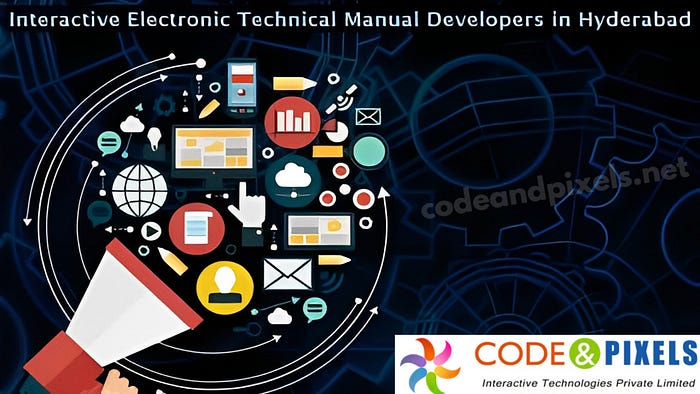A Brief Outline Of “IETM Software” How Does It Work?
Explore the levels, power of IETM Software, and understand the importance of proper documentation and CSDB, (Common Source Data Base). CSDB Studio for a seamless experience.
IETMs: Exploring Interactive Electronic Technical Manuals
Introducing the IETM, the Interactive Electronic Technical Manual! Sounds fancy, right? Well, it’s exactly what it sounds like — a manual that’s interactive and all digital. So, picture, PDF file, which is also electronic and digital. Guess what? That’s also considered an IETM. It falls under the Level 2 IETM category, to be precise.
Understanding IETMs: More Than Just PDFs
Now, let me break it down for you with a little game analogy. You know those digital games we all love? Well, they have levels, right? The first level is usually a piece of cake, the second gets a bit trickier, the third is more challenging, and the fourth level? Oh, that one’s tough!
IETM Levels 3 and 4:
But why do we even need these manuals, you ask? Well, imagine you’ve got a brand new phone, car, or some cool gadgets for your home. Along with them, you usually get a user manual. It’s there to save the day if you run into any trouble while using your shiny new toy. Instead of panicking and trying to reach the original equipment manufacturer (OEM) or service center, you can refer to the manual and sort things out yourself. Those guys aren’t available 24/7, after all.

That’s why these documents need to be written in simple language, easy to navigate, and accessible with just a few clicks. The bigger the system or device, the more pages and variety of manuals you’ll find. We’re talking user manuals, operator manuals, maintainer manuals, spare lists, and whatnot.
The Benefits of IETM Software and Database Integration
Now, imagine a system failure occurs. The operator might need to consult multiple manuals, and flipping through hardcopies or searching through different PDFs can be a real pain. But fear not! The purpose of the manual is to guide the operator, and it becomes a breeze if it’s more dynamic. Levels 4 and 3 are especially handy and lightning-fast. See, all the documents are converted into a database, making searching and cross-referencing a piece of cake.
Imagine this: you can search for a problem and find the exact page you need in just a few seconds. Plus, you’ll be able to see all the related topics displayed neatly. How cool is that?
Modes of Operation: User, Level 1, to 4
So, we’ve got four levels to classify these manuals. Level 1 is the simplest, like your regular scanned document or normal PDF file. Level 2 steps it up a notch with basic indexing and internal links between pages. Level 3 takes it further with HTML/XML based software, while Level 4 is the real deal, featuring advanced navigation features in its HTML/XML based software.
Oh, and by the way, since 2014, the Indian Defense has been asking for all equipment to be delivered along with IETMs. They know what’s up! And when it comes to complexity, they usually request Level 3 or Level 4 in their RFQ documents. Lately, it’s been mostly Level 4.
Just a heads up, let’s keep the conversation in English. Ready to dive into the world of IETMs?
Standards in the IETM:
Ever heard of IETM? It’s like a document, but not quite like your regular old PDF file. Levels 3 and 4 of IETM are a whole different ball-game. We’re talking software and a database combo here! All those manuals, drawings, and images? They get converted into an SQL database. And guess what? You can access all that goodness using the IETM Viewer. It’s got three modes: user mode for accessing documents, admin mode for creating users and keeping tabs on their activities, and the super admin or Authoring tool mode, where all the manuals get transformed into a database.
Indian Defense and European Aviation: S1000D
Now, let’s talk standards! We’ve got two flavors of IETMs out there. First up, we’ve got the INDIAN Defense Standard, also known as JSG 0852:2001. The government of India, Ministry of Defense, set this baby up, and it got a little revamp in 2007. On the other hand, we’ve got the European Aviation standard, also called S1000D, which is mainly used in the Aviation industry.
- So, how do you know which standard you’re dealing with? Well, if the RFQ or tender documents mention IETM, it means it’s the Indian standard. But if the end-user specifically wants S1000D, they’ll make it clear by mentioning “S1000D IETM LEVEL 4.”
Now, let’s talk about the differences between these standards. At the end of the day, they both aim for the same goal: easy access to all the documents and key points with just a few clicks.
Decoding the Differences — Indian Standard: SQL Database and HTML-based Approach
- The Indian Standard relies on an SQL Database and the IETM Viewer to peek into that database. The IETM Viewer comes with nifty tools for faster and more effective navigation. And the best part? You don’t need any fancy third-party software to run it. The OEM (Original Equipment Manufacturer) can do their edits using the authoring tool built into the IETM software.
- On the other hand, S1000D is a bit pricier than the Indian standard. It’s XML-based, unlike the Indian Standard’s SQL and HTML combo. Some companies convert their documents to XML and call it S1000D, but watch out! Simple XML doesn’t cut it. If the end-user, like the navy or a shipowner, doesn’t have a CSDB studio, they won’t be able to import all those IETMs and create a single master IETM.
